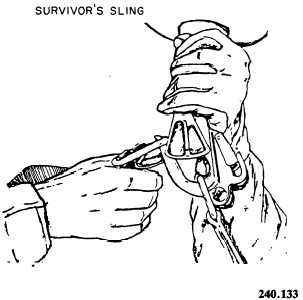Figure 5-25.—Attaching the rescue hook to the gated D-ring.
in the life raft and await instruction from the
swimmer.
The aviator and the aircrewman must be
familiar with a number of rescue devices to en-
sure a successful rescue. These devices are covered
in the Aircrew Survival Equipmentman 3 & 2,
volume 1, NAVEDTRA 10328. In this chapter we
will discuss the use of the various rescue
devices.
In each case when a Navy helicopter is the
rescue vehicle, the Navy rescue swimmer will be
e m p l o y e d t o e f f e c t t h e r e s c u e . F o l l o w t he
swimmer’s instructions and do not assist his
efforts unless directed by him to do so. Because
other SAR forces may not employ a rescue
swimmer to assist survivors, this text will explain
procedures for assisted and unassisted rescue
using the following rescue devices.
Rescue Hook
The rescue hook is the primary rescue device
(fig. 5-24). All other rescue devices can only be
used with the double rescue hook. In accordance
with Aviation Crew Systems Rescue and Survival
Equipment, NAVAIR 13-1-6.5, the large hook,
rated at 3000 pounds, shall be the only hook used
to hoist personnel; the small hook, rated at 1000
pounds, is to be used only for lightweight items
such as mail. The equipment ring, rated at 1000
pounds, can be used to hoist light equipment and
mail.
Hoisting personnel by the equipment
ring or small hook can lead to failure of
the ring or hook and can result in injury
or death of hoisted personnel.
When wet and cold, an individual may have
difficulty handling the latch on the rescue hook.
However, by pushing down on the latch with the
gated D-ring, you will force the latch open on
either the hook or the gated D-ring (fig. 5-25).
Rescue Swimmer’s Harness
During swimmer-assisted rescues, the swim-
mer’s harness may be used to attach the survivor
to the hoist cable. When the rescue swimmer’s
harness is selected as the rescue lifting device, the
rescue swimmer uses the following procedure:
1. He approaches the survivor from the rear
and pulls the chest strap from the pocket of the
rescue harness.
NOTE: When connecting to a survivor
who has an SV-2 vest, he ensures that the chest
strap on the survivor is loosened slightly to avoid
injury. If the survivor is wearing an integrated
torso harness, he uses extreme caution to ensure
that the gated D-rings are not disconnected before
hoisting.
2. Connects the gated D-ring of the rescue
swimmers harness to the survivors lifting device.
The connection of the survivor’s lifting device to
the rescue hook will negate the survivor’s quick
release feature of the swimmer’s harness.
3. Signals the aircraft “ready for pickup.”
When the rescue hook is lowered in the water,
connects the lifting V-ring of the rescue swimmer’s
harness to the large rescue hook.
4. Signals the aircraft “ready for hoist.”
NOTE: If the survivor is wearing an
integrated torso harness, the swimmer ensures that
the gated D-rings are not disconnected before
hoisting. Upon reaching the aircraft door opening
and while bringing in the survivor, he ensures that
the gated D-rings do not twist and inadvertently
disconnect.
5. Upon clearing the water, he places his arms
and legs around the survivor.
5-21

